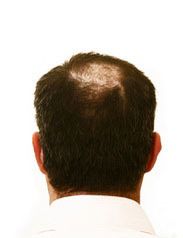About Hair Loss

Hair loss is when hair sheds or breaks off at an abnormal rate, making it difficult to replenish. In some cases, this hair does not grow back. Although people believe only men suffer from this condition, women children and adolescents can also suffer from severe hair loss as well.
Normal hair growth
Hair lives for about 2-5 years and grows about a half an inch a month; however, some individuals can experience a much faster or slower growth rate. The majority of this hair is constantly developing while roughly ten percent of it stays in place during a dormant follicular phase. After this phase, the “sleeping” hair falls out. This is what contributes to “hair shedding.”
For some people, excessive shedding can occur. In a few of them, the hair loss is permanent.
Signs of hair loss
Some of the most common signs of hair loss are extreme thinning and shedding. This shedding can be, but is not always, proceeded by a tingling in the scalp. In some cases, the hair comes out in huge clumps.
Other signs include sparseness on certain areas of the head and scalp. Slick, balding patches can develop with a condition called alopecia areata. Androgenetic alopecia occurs in both women and men creating thinning hair or bald spots on the scalp.
Male hair loss
Male hair loss, also called male pattern baldness, can occur at any age, even in adolescents. The loss starts anywhere on the scalp and progresses over the years until baldness occurs. More often than not, male pattern baldness is caused by a hormonal imbalance.
Severe loss that culminates in clumps or covers clothing and bedding should be investigated as this is not typical of male pattern baldness.
Children's hair loss
Quiet as it is kept; children and teens can experience hair loss as well. With kids, there can be numerous reasons for this loss, including fungal infections and immune disorders. If you child is experiencing hair loss, take them to see a physician for diagnosis.
Hair loss is a common occurrence, but when it seems excessive, it should be examined. With proper attention, these causes can be isolated and the condition, possibly treated.


